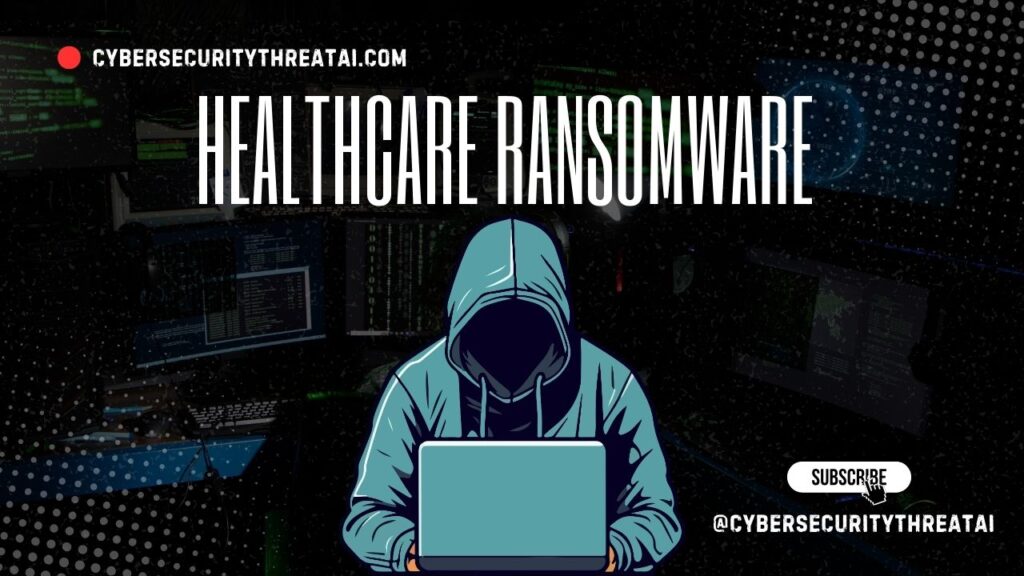Ransomware remains the number-one threat to healthcare in 2025, disrupting clinical services, driving data extortion, and stretching recovery timelines for providers and payers. A renewed wave led by Qilin, IncRansom, and RansomHub is exploiting edge vulnerabilities, abusing remote tools, and amplifying double-extortion pressure to impact care delivery and revenue cycles.
Why healthcare is in the crosshairs
Healthcare combines legacy systems, complex vendor dependencies, and life-critical operations, creating asymmetric incentives to pay when downtime risks patient harm. Threat actors increasingly steal data and target shared services like labs and IT vendors to magnify disruption across multiple hospitals from a single upstream compromise.
Qilin’s expansion and Fortinet exploit wave
Qilin (Agenda) has matured into a RaaS with Windows and Linux/ESXi encryptors and highly customizable payloads, enabling affiliates to tailor attacks against high-value healthcare targets. Throughout mid-2025, reports highlighted coordinated campaigns exploiting Fortinet SSL‑VPN flaws (e.g., CVE‑2024‑21762, CVE‑2024‑55591) for auth bypass and RCE, with automation lowering time-to-compromise on internet-facing edges. Its past impact on pathology services that cascaded into NHS hospital disruptions shows the systemic risk of shared clinical services.
Qilin techniques and operational signals
Affiliates rely on double extortion, ESXi-targeting builds, and dedicated leak sites, adding negotiation and legal-pressure features that professionalize the extortion model. Detected activity shows opportunistic targeting with heavy healthcare exposure, where pathology and diagnostic dependencies amplify clinical impact.
IncRansom’s healthcare focus and affiliate tradecraft
IncRansom operations observed in healthcare often chain initial access via loaders and backdoors with off-the-shelf remote tools like AnyDesk and cloud sync (e.g., MEGA) for staging and exfiltration before encryption. Common playbook steps include exploiting edge vulnerabilities, credential theft, PsExec/RDP lateral movement, discovery, archive staging with 7‑Zip/WinRAR, and fast, multi-threaded encryption.
Impact snapshots and regional exposure
Campaigns against public health systems and large provider networks have included threats to leak multi-terabyte datasets, maximizing reputational and regulatory leverage. U.S. incidents show IT outages, rescheduled procedures, and communications impairments, underscoring the need for resilient clinical continuity planning.
RansomHub’s rise and healthcare spillover from mega-breaches
RansomHub, a successor lineage to Cyclops/Knight, has executed cross-sector data-theft and extortion, with affiliates using a multifunction backdoor (e.g., “Betruger”) in recent operations. Reporting attributes hundreds of victims to RansomHub through 2024–2025, with growing activity share and notable focus on critical infrastructure, including healthcare.
Change Healthcare aftershocks and ecosystem risk
Extortion linked to RansomHub compounded the fallout of the Change Healthcare breach, stressing provider cash flows and exposing patient data, and highlighting the fragility of shared revenue-cycle platforms. Broader law-enforcement and industry reporting underlines the group’s operational scale and affiliate appeal.
CISO playbook: prioritized mitigations
- Harden the edge: Patch and verify compensating controls for Fortinet SSL‑VPN and similar access points; enforce MFA on all remote access; remove legacy/weak protocols; monitor for anomalous VPN logins.
- Kill common affiliate tradecraft: Restrict PsExec; reduce RDP exposure; baseline and alert on AnyDesk/MEGA usage; monitor WMI, Rclone, 7‑Zip/WinRAR staging; add egress filtering and domain controls for unsanctioned cloud storage.
- Protect ESXi and backups: Isolate hypervisor management; use immutable, tamper-proof backups; test bare-metal and EMR/EHR restores quarterly with RTO/RPO tied to patient safety.
- Third-party criticality: Tier‑1 vendor reviews across labs, imaging, RCM, and RMM; require exploit SLAs, SBOMs, and incident data-sharing; simulate managed lab outage scenarios for transfusion/diagnostics continuity.
- Data extortion resilience: DLP for PHI hotspots, encryption-at-rest with strong key management, breach-notification and dark web monitoring workflows to reduce negotiation leverage.
Detection engineering: high-signal rules
- Initial access: Anomalous ASN/geo VPN logins without MFA; Fortinet SSL‑VPN exploit indicators; sudden admin promotions on edge appliances; loader/backdoor artifacts on jump hosts.
- Lateral movement: Unusual PsExec service creation, WMI remote process, or RDP sessions to servers outside admin baselines; spikes in SMB handle operations on file servers.
- Exfiltration and staging: Surges in 7‑Zip/WinRAR on servers; new MEGA/Rclone binaries; egress anomalies to cloud storage outside allowlists; large outbound HTTPS to uncommon domains.
- Pre‑encryption signals: Mass rename patterns; high-entropy write bursts on file shares/EMR repositories; ESXi snapshot/delete sequences; suspicious VSS shadow deletions and service kills.
Incident response essentials for providers
- Contain fast, care first: Segregate affected segments; preserve imaging and lab connectivity where safe; invoke clinical downtime procedures with coordinated comms to triage, pharmacy, and radiology.
- Evidence and extortion posture: Preserve volatile artifacts; coordinate with law enforcement; align executive ransom stance with regulations and insurance; prepare for overlapping extortion attempts.
- Recovery and assurance: Rebuild from trusted gold images; rotate credentials and tokens; run post-incident tabletop focused on vendor dependencies and revenue-cycle continuity.
Conclusion and CTA
Healthcare’s ransomware surge is driven by motivated affiliates, exploitable edges, and high operational stakes. Sustained resilience demands disciplined patching, targeted detections mapped to affiliate tradecraft, and rigorous clinical continuity planning. Consider a focused 2‑hour CISO workshop to map high-risk edges, validate remote access controls, and deploy detections for Qilin/IncRansom tradecraft, plus a tabletop for labs/RCM and an immutable backup restore test for EMR and imaging repositories.
References
- Check Point: Qilin Ransomware (Agenda) deep dive
- BleepingComputer: Critical Fortinet flaws exploited in Qilin attacks
- Darktrace: Qilin RaaS detection insights
- The Hacker News: Qilin leads April 2025 spike; NETXLOADER campaign
- BleepingComputer: Microsoft — North Korean Moonstone Sleet deploying Qilin
- Cyble: Qilin leads July 2025 ransomware attacks
- SecurityWeek: Qilin claims Lee Enterprises attack
- BleepingComputer: RansomHub uses Betruger backdoor
- The Hacker News: RansomHub targets 210 victims (profile and activity)
- BitSight/Analysis: RansomHub 2025 TTPs and insights


